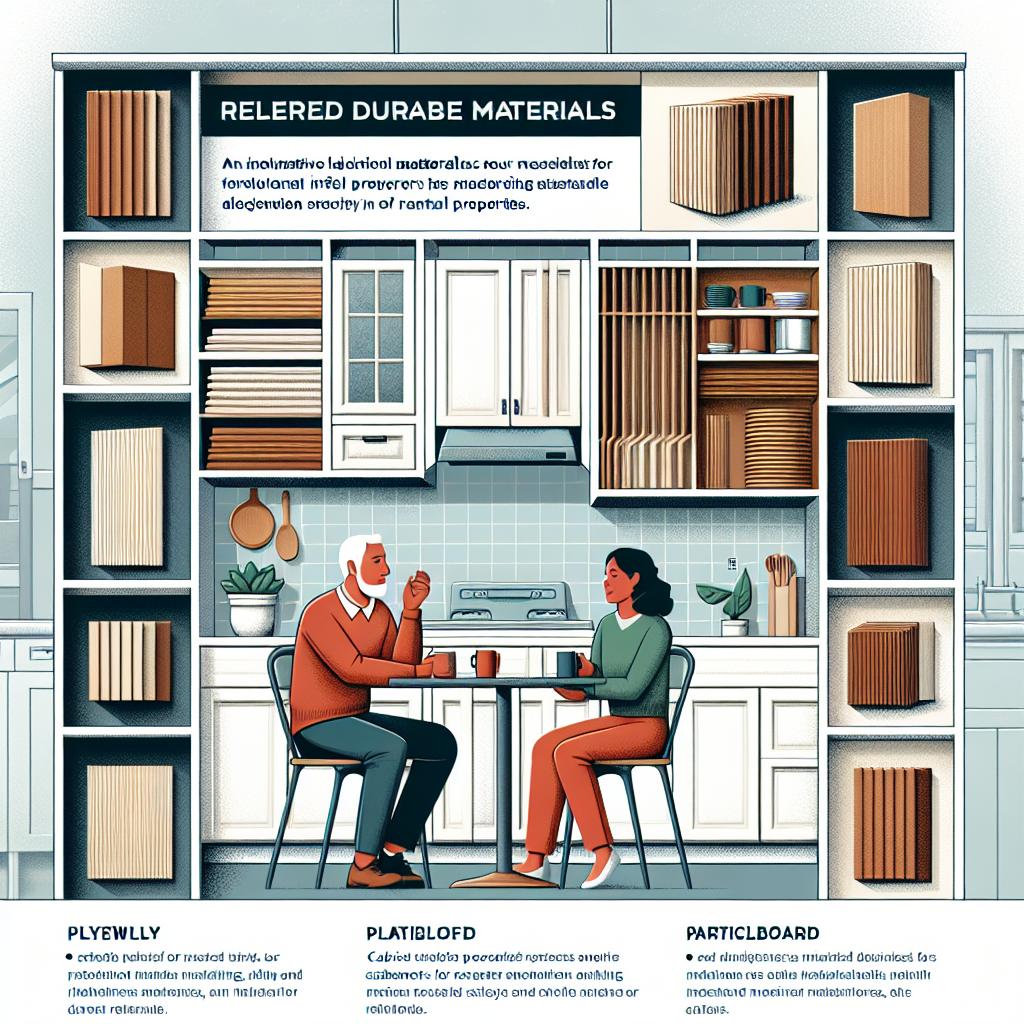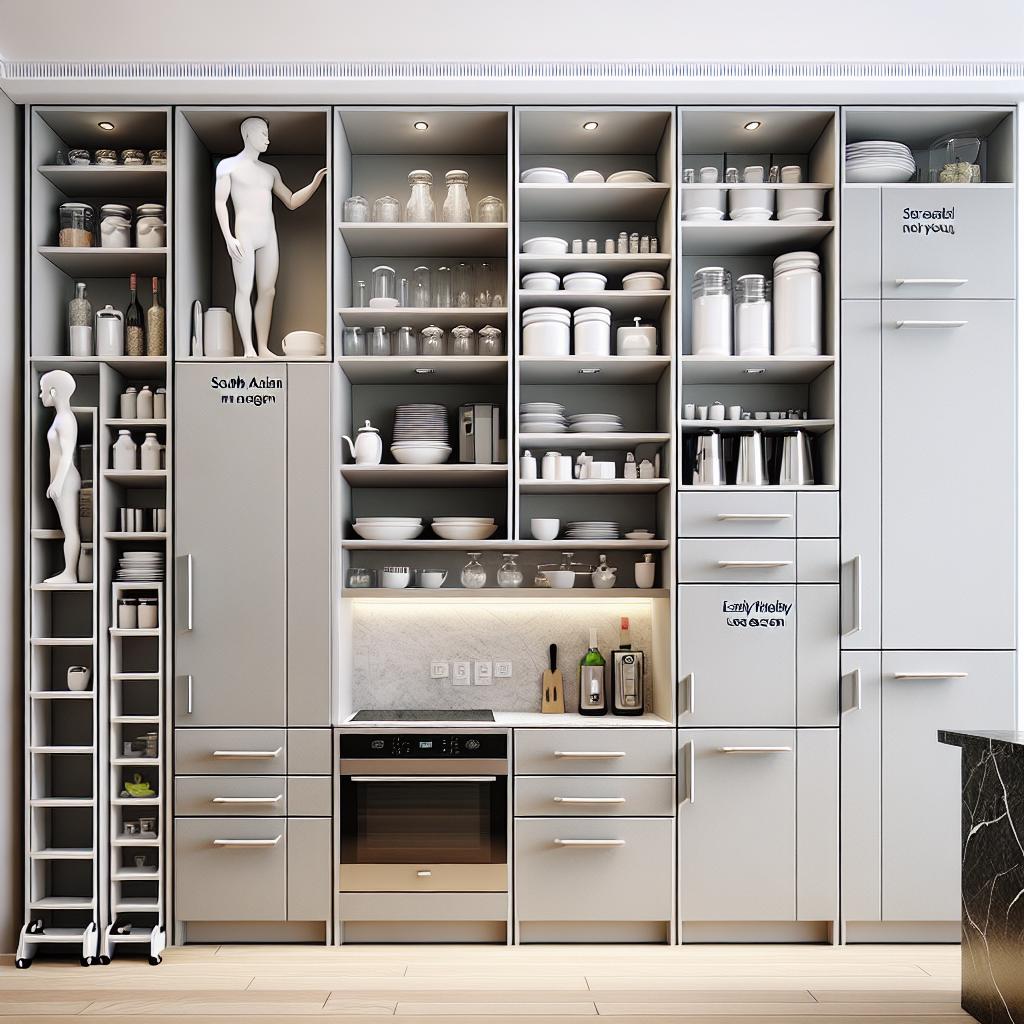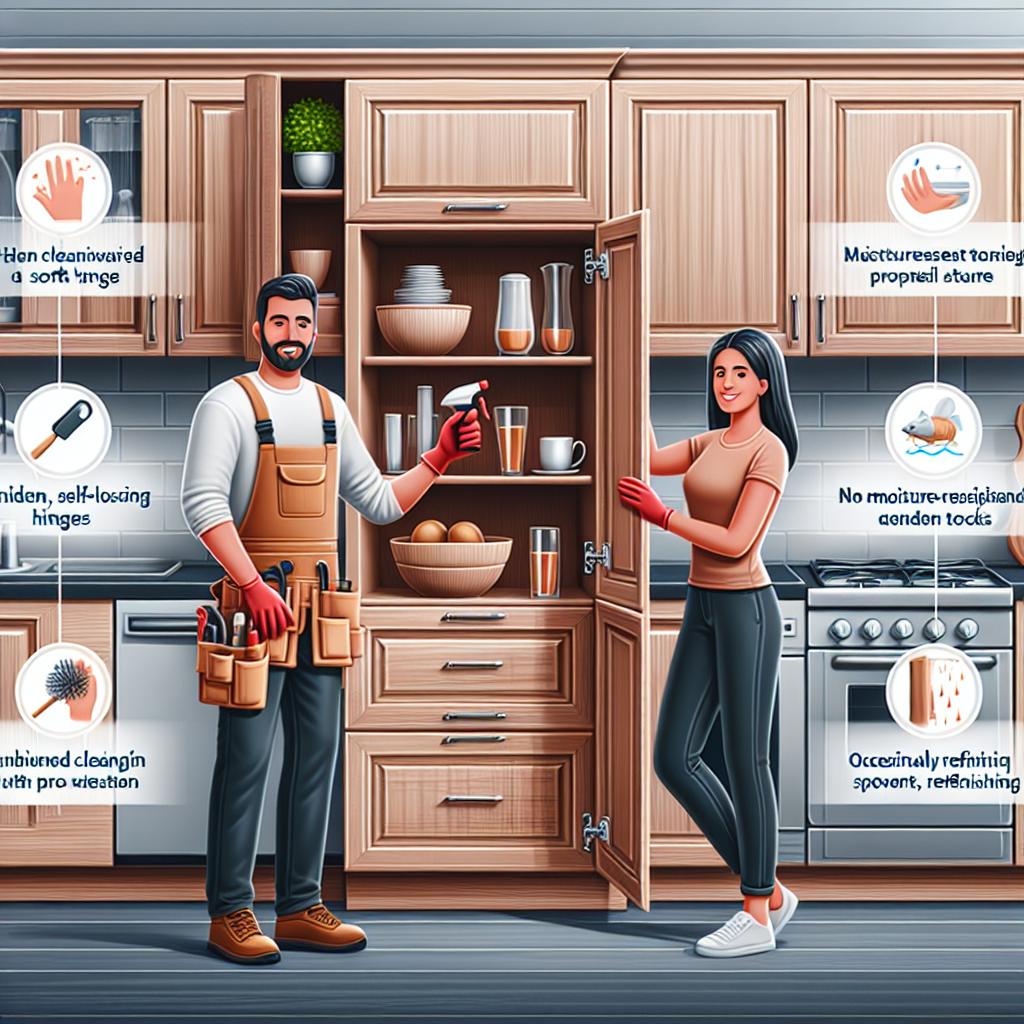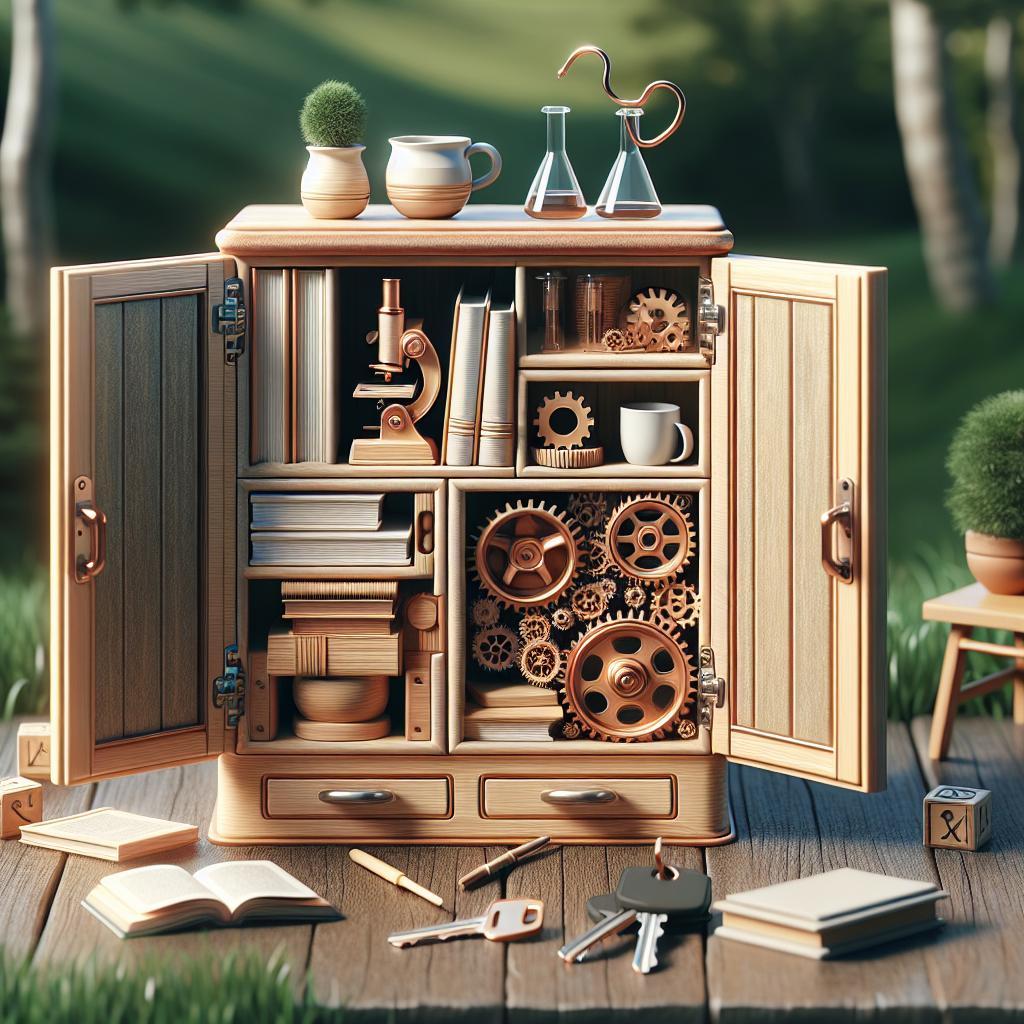Title: Cabinetry for Rental Properties: Balancing Functionality and Aesthetics
In the dynamic world of real estate, where first impressions can make or break a tenant’s decision, the importance of effectively designed cabinetry cannot be overstated. As landlords and property managers seek to enhance their rental offerings, the right cabinetry emerges as a pivotal element that melds form with function. Whether it’s a cozy studio apartment or a spacious family home, cabinetry serves not only as a storage solution but also as a visual anchor within the space, influencing the overall ambiance and appeal. This article explores the intricacies of selecting the ideal cabinetry for rental properties, focusing on durability, style, and affordability—all essential factors for attracting and retaining tenants in a competitive market. Join us as we navigate through the essential considerations and innovative options available, helping property owners transform their rentals into inviting, functional living spaces.
Choosing Durable Materials for Rental Property Cabinetry
When selecting cabinetry for rental properties, it’s essential to prioritize durability over aesthetics alone. Tenants are often less cautious than homeowners, leading to potential wear and tear that can occur quickly. Materials such as melamine and high-density fiberboard (HDF) can withstand daily use, providing a robust solution without breaking the bank. Additionally, consider options like laminated surfaces or thermofoil finishes, which not only resist scratches but are also easy to clean—ensuring that your cabinetry remains attractive and functional throughout the lease period.
Furthermore, opting for cabinetry with metal reinforcements can offer an extra layer of security against damage. Pay attention to the hardware as well; choose sturdy, rust-resistant hinges and handles to enhance longevity. Below is a simple comparison of materials you might consider:
| Material | Durability | Maintenance | Cost |
|---|---|---|---|
| Melamine | High | Low | Affordable |
| Solid Wood | Moderate | Medium | Expensive |
| Laminated Surfaces | High | Very Low | Moderate |
| Thermofoil | High | Low | Affordable |

Maximizing Space Efficiency with Smart Cabinet Designs
In rental properties, where every square inch counts, innovative cabinet designs can transform an ordinary space into a model of efficiency and style. Smart cabinet solutions allow tenants to maximize their storage options without compromising on aesthetics. Here are some notable features to consider:
- Modular Components: Customizable sections can adapt to various needs, allowing tenants to create a space tailored to their lifestyle.
- Pull-out Shelving: Maximizes reach and accessibility, perfect for deep cabinets where items tend to get lost.
- Multi-function Units: Cabinets that combine storage with seating or workspace help to create versatile living areas.
Moreover, the use of vertical space is crucial in smaller rental units. Consider installing cabinets that stretch up to the ceiling, creating a perfect space for less frequently used items. Utilizing pocket doors also helps in saving space by minimizing the swing radius traditionally needed for cabinet doors. A well-designed cabinet structure can provide not only storage but also enhance the overall aesthetic appeal. Here’s a simple comparison of cabinet designs based on functionality:
| Design Type | Key Feature | Best For |
|---|---|---|
| Corner Cabinets | Maximized corner storage | Small kitchens |
| Open Shelving | Showcase items | Decorative storage |
| Floating Cabinets | Floor space efficiency | Modern designs |
Cost-Effective Upgrades to Enhance Tenant Appeal
Upgrading cabinetry in rental properties doesn’t have to break the bank. By focusing on a few key areas, landlords can significantly improve the aesthetic and functional appeal of their units. Consider applying a fresh coat of paint to existing cabinets, which can instantly rejuvenate the look of a kitchen or bathroom. Choosing neutral, trendy colors can brighten up spaces and attract potential tenants. Additionally, swapping out old hardware for modern knobs and pulls can impart a sleek, updated feel without requiring a complete renovation.
Another cost-effective solution lies in strategically replacing the most worn-out cabinet pieces. Instead of overhauling the entire cabinetry, landlords can opt for partial replacements, such as new base cabinets or cabinet doors that match existing finishes. Pairing these enhancements with clever storage solutions, like pull-out shelves or dividers, can showcase functionality. Here’s a simple comparison of potential upgrades:
| Upgrade Option | Estimated Cost | Tenant Appeal |
|---|---|---|
| Fresh Paint | $$ | High |
| New Hardware | $ | Medium |
| Partial Cabinet Replacement | $$$ | High |
| Storage Solutions | $$ | Very High |

Maintenance Tips for Long-Lasting Cabinetry in Rentals
html
To ensure that cabinetry in rental properties remains functional and visually appealing, implementing a consistent maintenance routine is essential. Start by wiping down surfaces regularly with a damp cloth to remove dust and spills that can accumulate over time. This practice not only keeps the cabinetry looking pristine but also prevents buildup that may lead to long-term damage. Consider the following tips:
- Avoid harsh chemicals: Use gentle cleaning solutions to prevent the finish from deteriorating.
- Check for loose handles: Regularly inspect and tighten hardware to avoid wear and tear.
- Address scratches promptly: Keep a touch-up kit handy for any nicks or blemishes.
Another crucial aspect of maintaining cabinetry is climate control. Humidity and temperature fluctuations can result in warping, especially in wooden cabinets. It’s wise to monitor the humidity levels in your rental space to ensure they stay within an optimal range (30-50%). For your reference, here's a simple table indicating ideal conditions:
Condition
Ideal Range
Temperature
60°F - 75°F (15°C - 24°C)
Humidity
30% - 50%
Additionally, consider installing cabinet liners and using coasters or pads under appliances to prevent scratches and denting. With attention to these details, rental cabinetry can maintain its charm and longevity for years to come.
Q&A
Q&A: Cabinetry for Rental Properties
Q1: Why is cabinetry important in rental properties?
A1: Cabinetry plays a critical role in rental properties as it directly impacts the aesthetics and functionality of the space. Well-chosen cabinets can enhance the overall appeal of the property, making it more attractive to potential tenants. Additionally, sturdy cabinets can withstand the wear and tear of rental living, providing durability and longevity, which is crucial for maintaining the property’s value.
Q2: What types of cabinetry work best for rental properties?
A2: When selecting cabinetry for rental properties, consider materials that are both durable and easy to maintain. Plywood and solid wood are excellent choices for their strength, while laminate and particleboard can be budget-friendly alternatives. Look for finishes that resist scratches and stains, making them suitable for frequent use. Modular cabinetry systems can also be a practical option, allowing for flexibility in layout and design.
Q3: How can cabinetry influence a tenant’s experience?
A3: Quality cabinetry can significantly improve a tenant’s experience by offering both functionality and style. Ample storage solutions help tenants maximize their living space, allowing for better organization and accessibility. Moreover, modern designs can create a more welcoming environment, influencing tenants’ satisfaction and their likelihood of renewing leases.
Q4: Should landlords prioritize aesthetics or functionality when choosing cabinetry?
A4: Striking a balance between aesthetics and functionality is key. While attractive cabinetry can enhance the visual appeal of the property, it should not compromise practicality. Opt for cabinets that offer a pleasing design while still being user-friendly, providing adequate storage and ease of access. Ultimately, striking this balance can lead to happier tenants and minimize turnover rates.
Q5: What budget considerations should landlords keep in mind for cabinetry?
A5: Landlords should assess their budget holistically, taking into account not just the initial costs of cabinetry but also potential maintenance and replacement expenses. Investing in higher-quality materials may yield better longevity and lower repair costs in the long run. Additionally, consider the property’s rental market; budget for cabinetry that aligns with the expectations and preferences of the target demographic.
Q6: How can landlords keep cabinetry looking fresh and appealing?
A6: Regular upkeep is essential for maintaining cabinetry in rental properties. Landlords should establish a routine for inspections and cleaning to address minor wear before it escalates. Using gentle cleaners can help preserve surfaces, while regular checks for loose hardware and alignment issues can maintain functionality. Consider seasonal touch-ups or replacements for cabinetry that shows significant signs of wear to keep the property appealing.
Q7: What are some eco-friendly cabinetry options for rental properties?
A7: Eco-friendly cabinetry options are increasingly popular among conscientious landlords and tenants alike. Look for cabinets made from sustainable materials, such as bamboo or reclaimed wood. Additionally, consider products that utilize low-VOC finishes, promoting better indoor air quality. Investing in environmentally responsible cabinetry not only benefits the planet but can also attract eco-minded renters.
Q8: How can landlords integrate cabinetry with other property renovations?
A8: Integrating cabinetry with other renovations can create a cohesive look throughout the rental property. When updating kitchen or bathroom spaces, consider collaborating with contractors to ensure that cabinetry complements countertops, flooring, and fixtures. Additionally, a unified design theme can make the property more appealing and can command higher rental rates.
Q9: What trends should landlords consider in cabinetry design?
A9: Current cabinetry trends include minimalist designs, open shelving, and multi-functional units that offer versatility in small spaces. Neutral color palettes remain popular, but incorporating bold accents can add character. Additionally, smarter storage solutions, like pull-out shelves and lazy Susans, are increasingly desirable for their practicality. Keeping an eye on trends can help landlords stay competitive in the rental market.
Q10: Where can landlords find reliable cabinetry suppliers?
A10: Landlords looking for reliable cabinetry suppliers should start by researching local home improvement stores and specialty cabinetry shops, which often offer a variety of styles and price points. Online marketplaces and manufacturers can also provide insights into recent trends and innovations. Seeking recommendations from fellow landlords or contractors can lead to trustworthy suppliers who meet quality and service expectations.
The Way Forward
In the ever-evolving landscape of rental properties, the importance of investing in quality cabinetry cannot be overstated. By selecting durable, functional, and aesthetically pleasing options, property owners can create an appealing environment that attracts tenants and enhances the overall value of their investment. Whether you opt for modular solutions that offer flexibility or custom designs that make a statement, the right cabinetry can transform a space from ordinary to exceptional. Remember, thoughtful design integrates practicality with style, ensuring that your rental stands out in a crowded market. As you embark on your cabinetry journey, keep in mind the balance between expense and return, never losing sight of the long-term benefits. With strategic choices tailored to your target demographic, your rental property will not only meet the needs of its occupants but also pave the way for success in the competitive real estate landscape. After all, a well-crafted cabinet isn’t just a storage solution; it’s the heart of a home.

